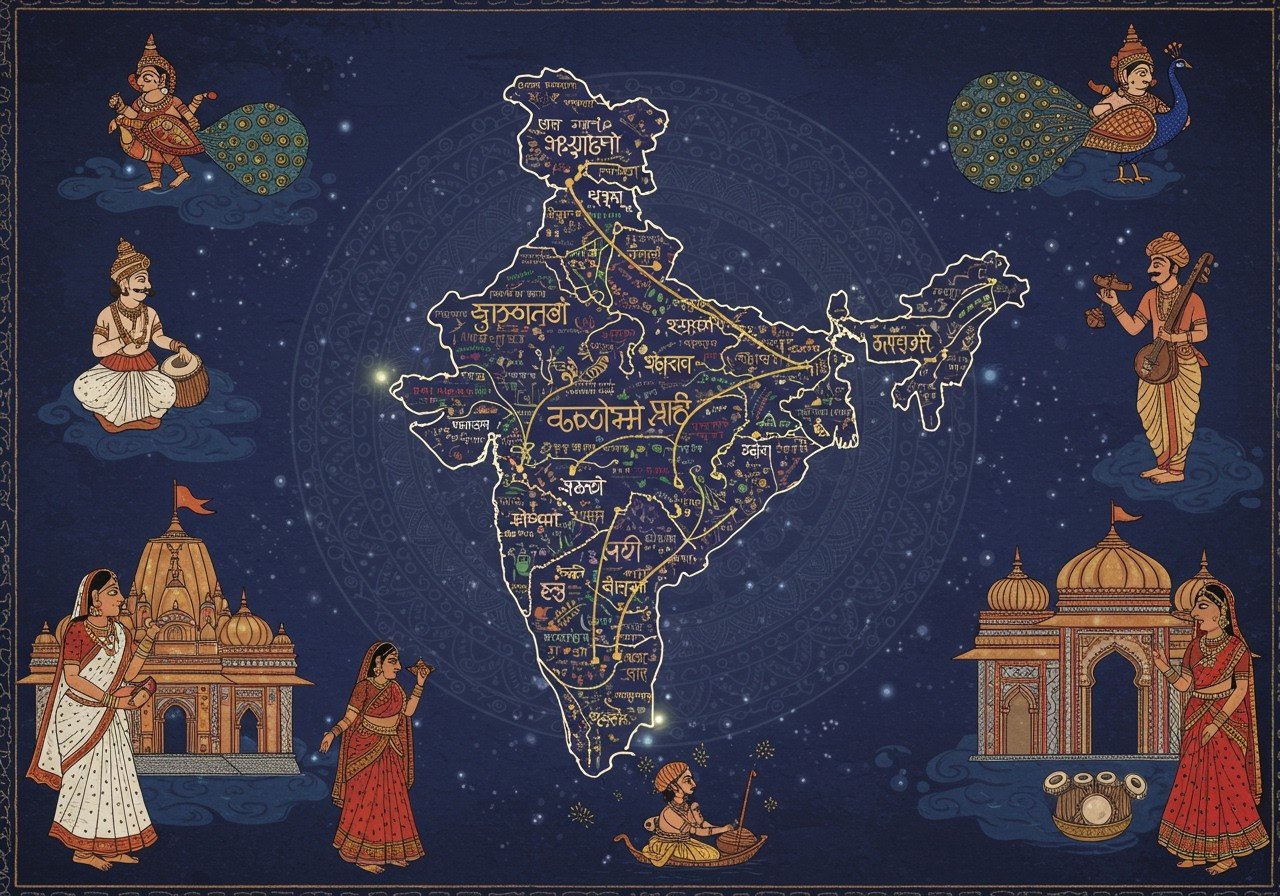
India, a land of vibrant cultures, boasts an astounding linguistic diversity. From the Himalayas to the Indian Ocean, a symphony of languages echoes through its valleys and cities. This linguistic tapestry isn’t just a collection of words; it’s the embodiment of the nation’s history, traditions, and cultural identity. Let’s embark on a journey to understand the intricate linguistic landscape of India.
Major Language Families of India
The languages of India can be broadly classified into four major families:
- Indo-European: This prominent family holds sway across northern and central India, encompassing languages like Hindi, Punjabi, Bengali, and Marathi. It’s a testament to ancient migrations and cultural exchanges.
- Dravidian: Predominantly spoken in southern India, this family includes languages like Tamil, Telugu, Kannada, and Malayalam. They represent a distinct linguistic tradition with deep historical roots.
- Tibeto-Burman: This family finds its home in the northeastern states, including languages like Assamese, Bodo, and Manipuri, reflecting the region’s unique cultural influences.
- Austro-Asiatic: Also found in the northeast, languages like Santhali and Khasi belong to this family, representing another layer of linguistic diversity in the region.
Constitutional and Official Languages of India
The Indian Constitution acknowledges the nation’s linguistic richness by recognizing 22 scheduled languages in the Eighth Schedule. These languages play an essential role in administration, education, and cultural preservation.
Hindi, written in the Devanagari script, serves as the official language, facilitating communication across diverse regions. English acts as the associate official language, further enhancing connectivity and accessibility.
Language Distribution Across India
India’s linguistic diversity is not uniform. While Hindi serves as a lingua franca across much of North and Central India, other languages have regional strongholds:
- Bengali: A significant language in the eastern and northeastern regions, it boasts a rich literary and cultural heritage. It’s a language deeply intertwined with the region’s identity.
- Marathi: Primarily spoken in the western state of Maharashtra, it is also understood in neighboring areas. It plays a crucial role in the state’s cultural landscape.
- Telugu: Widely spoken in the southeastern states of Andhra Pradesh and Telangana, it has a prominent presence in cultural expression, including film and music.
This complex linguistic landscape adds to the vibrant cultural mosaic of India.
Mapping the Languages of India
Visualizing India’s linguistic diversity is a fascinating endeavor. Web applications and linguistic maps employ color schemes to depict the distribution of mother tongues across the country. The color density reveals regions with higher linguistic concentration, providing valuable insights for policymakers, educators, and researchers.
The Cultural Significance of Language in India
Language is more than just a communication tool; it’s the lifeblood of culture. In India, language plays a pivotal role in:
- Festivals and Traditions: Language shapes the rituals, songs, and stories that define festivals, passing down cultural heritage through generations.
- Food and Attire: Culinary traditions and clothing styles often have linguistic connections, reflecting the unique cultural expressions of different language groups.
- Religious Ceremonies: From ancient Sanskrit chants to hymns in regional languages, language carries the spiritual essence of religious practices, connecting individuals to their faith.
Preserving India’s Linguistic Heritage
In an increasingly globalized world, preserving linguistic diversity is crucial. Efforts to protect and promote minority languages are underway through government initiatives, educational programs, and digital platforms. These initiatives ensure that the rich linguistic heritage of India continues to thrive.
Poojn.in: Bridging Language Barriers in Accessing Puja Items
At Poojn.in, India’s leading online store for cultural and religious goods, we celebrate India’s linguistic diversity. We understand that puja items are known by different names across various regions and languages.
Our platform offers a seamless experience for all, regardless of their linguistic background. You can search for products using regional names, ensuring you find exactly what you need. For instance, whether you search for “Kapura,” “Karpura,” or “Pacha Karpooram,” you’ll find the same high-quality camphor on Poojn.in.
We offer a diverse range of puja essentials:
- Camphor Tablets: Available in various sizes and quantities to suit your needs. Pure and finely selected for optimal use in religious ceremonies.
- Candles: From small prayer candles to larger ones for special occasions. We offer a variety of candle sizes and types to create the perfect ambiance for your puja.
- Ghee: Pure and clarified ghee for use in havan and other religious rituals. Sourced from trusted suppliers to ensure authenticity and quality.
- Bel Mala: Crafted with genuine bel wood, these malas are ideal for Lord Shiva devotees. The beads are carefully strung together to create a durable and sacred mala.
Our multilingual customer service team is ready to assist you in your preferred language, ensuring a smooth and personalized shopping experience.
Conclusion: A Celebration of Linguistic Unity
India’s linguistic diversity is a testament to its rich cultural heritage. Each language, each dialect, adds a unique thread to the vibrant tapestry of the nation. By embracing and preserving this diversity, we honor India’s past and empower its future. Let us continue to celebrate the symphony of languages that unites us in our diversity.


